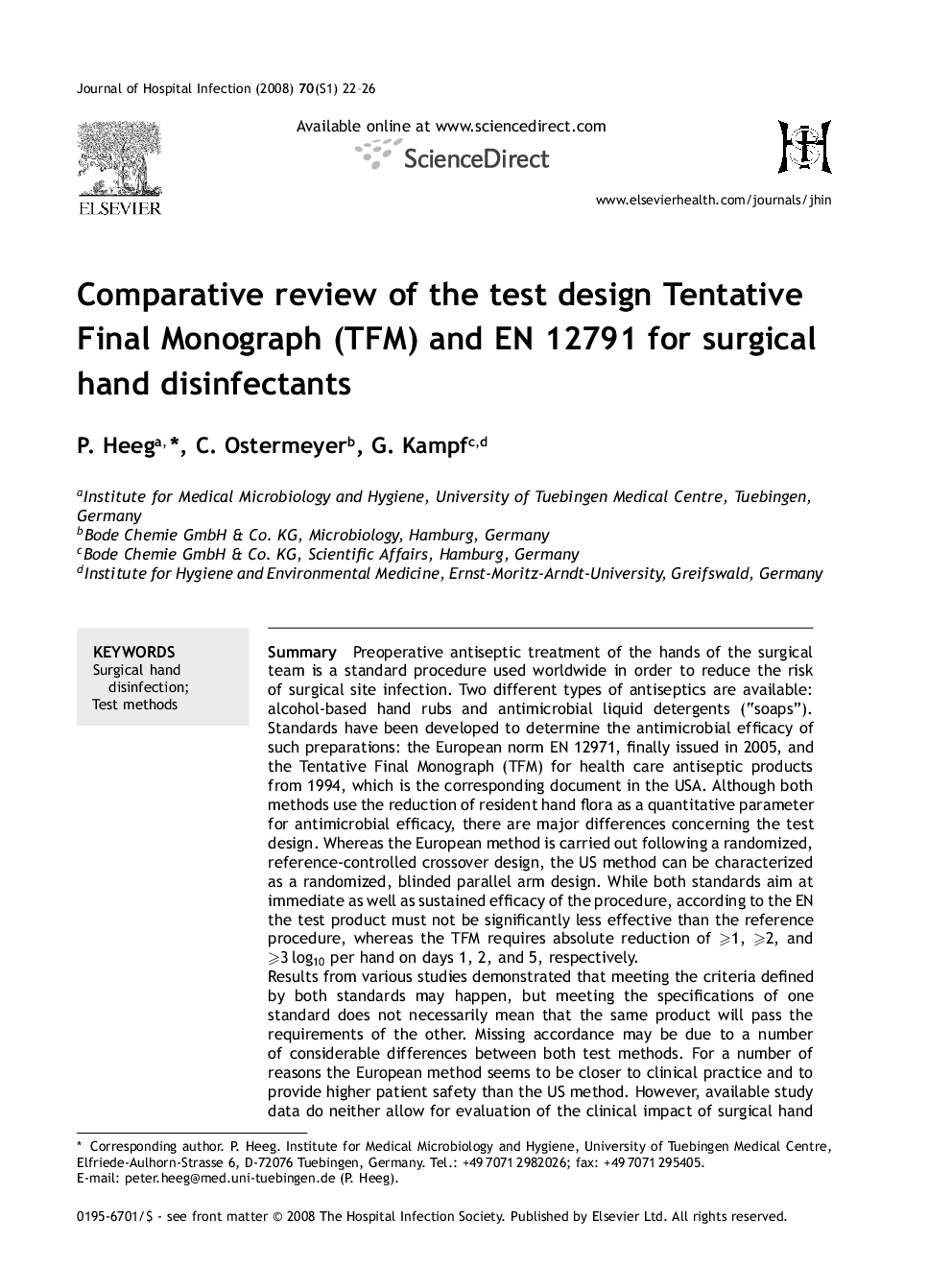| کد مقاله | کد نشریه | سال انتشار | مقاله انگلیسی | نسخه تمام متن |
|---|---|---|---|---|
| 3373194 | 1219285 | 2008 | 5 صفحه PDF | دانلود رایگان |

SummaryPreoperative antiseptic treatment of the hands of the surgical team is a standard procedure used worldwide in order to reduce the risk of surgical site infection. Two different types of antiseptics are available: alcohol-based hand rubs and antimicrobial liquid detergents (“soaps”). Standards have been developed to determine the antimicrobial efficacy of such preparations: the European norm EN 12971, finally issued in 2005, and the Tentative Final Monograph (TFM) for health care antiseptic products from 1994, which is the corresponding document in the USA. Although both methods use the reduction of resident hand flora as a quantitative parameter for antimicrobial efficacy, there are major differences concerning the test design. Whereas the European method is carried out following a randomized, reference-controlled crossover design, the US method can be characterized as a randomized, blinded parallel arm design. While both standards aim at immediate as well as sustained efficacy of the procedure, according to the EN the test product must not be significantly less effective than the reference procedure, whereas the TFM requires absolute reduction of ≥1, ≥2, and ≥3 log10 per hand on days 1, 2, and 5, respectively. Results from various studies demonstrated that meeting the criteria defined by both standards may happen, but meeting the specifications of one standard does not necessarily mean that the same product will pass the requirements of the other. Missing accordance may be due to a number of considerable differences between both test methods. For a number of reasons the European method seems to be closer to clinical practice and to provide higher patient safety than the US method. However, available study data do neither allow for evaluation of the clinical impact of surgical hand disinfection as such nor of the effect of a particular product on postoperative wound infection rates.
Journal: Journal of Hospital Infection - Volume 70, Supplement 1, October 2008, Pages 22-26